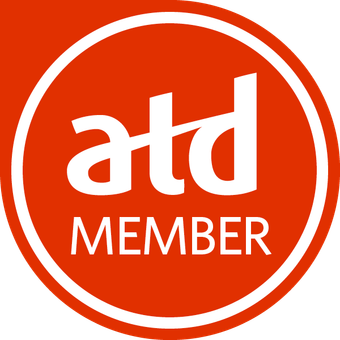 You are in the midst of implementing an important change in your organization and find not everybody is rallying around you. Some of the people you need are not translating their words into action or have refused outright to support your change effort. The executive sponsor who liked the idea of being aligned with a high profile, cutting-edge technology change program has failed to deliver the program budget he promised you.
You are in the midst of implementing an important change in your organization and find not everybody is rallying around you. Some of the people you need are not translating their words into action or have refused outright to support your change effort. The executive sponsor who liked the idea of being aligned with a high profile, cutting-edge technology change program has failed to deliver the program budget he promised you.
Or the implementation of the performance bonus system designed to lift the take-home pay of low paid process workers has not convinced them to adopt the new system. You thought that you had hit people’s hot buttons and can’t understand their reluctance to support your change efforts. You now need to develop a deeper understanding of the motivators that drive the people in your organization.
Let’s consider more closely the performance bonus example mentioned above. In this case, process workers were promised a 5% increase in their pay if they increased the number of assemblies they produced by 30% over a one-month period. Bonuses were to be calculated and distributed based on each individual’s output for the month. The increase in productivity was only possible if the process worker learned and used the new computer controlled production machine.
What are some of the reasons that the process workers would ignore this incentive scheme? Perhaps the 5% bonus was of value to them, but they considered it insufficient in making a discernable change to their lifestyle. So, we could say that the outcome was not of sufficient worth to them for them to change their behavior.
Secondly, the bonus may have been considered sufficiently worthy; however, the process workers believed that it was unlikely that they would receive the bonus on good performance. The workers had been promised incentives in the past, but management had always reneged, coming up with excuses that the company’s poor performance the previous year did not free up money for distribution. In this instance, the workers believed there existed only a tenuous link between their good performance and the promised outcome.
Thirdly, the workers may have valued the reward and believed that they would receive it if they performed, but did not consider that they could achieve the 30% improvement in performance. The workers saw themselves as unable to learn the new technology – none of them had ever used computers before and were afraid at the prospect – and from past experience they knew that the company was unwilling to devote the resources needed to train them properly. In this case, we could say that the workers believed that even if they did expend the effort to learn the new system, they would not be able to achieve the performance gains required.
To summarize, we could say that for someone to change their behavior, they would need to believe that:
a) the reward is of sufficient value, and
b) it is probable that if they performed that they would receive the reward (outcome), and
c) if they expended the effort that they would perform to the standard required.
The interconnections between these three factors – value, performance and effort – largely determine whether a person will strive for a particular change outcome. This way of looking at human motivation is known by psychologists as Expectancy Theory and provides a powerful method for uncovering and diagnosing difficulties within your change program.
Expectancy Theory provides the structure for the questions you need to ask when people are not behaving as you expect. Starting from the left hand side of the equation and working forward, pose yourself these questions:
Is the outcome (reward) of value to them?
Some rewards are intrinsic in that they do not rely on people outside of the person concerned. These rewards include the satisfaction that comes from doing a good job and solving a challenging problem. Extrinsic rewards depend on others giving them and include bonuses, promotions, company car, certificates and praise. The more your change program satisfies intrinsic needs, the less reliant it will be for success on contingent organizational reward systems.
If it is of value, is it of sufficient worth to change their behavior?
For monetary benefits, research has shown that the benefit must exceed a minimum threshold before it becomes a motivator. Other things to consider are the distance in time between the performance and the awarding of the incentive. As the distance in time increases, the perceived link between the reward and the desired behavior diminishes.
Does the person expect to enjoy the outcome if they perform as required?
Issues to consider here are the reliability of organizational systems and the levels of trust between layers of management and between frontline workers and management.
Does the person expect to perform to the standard required if they expend the effort?
Possible impediments to performance include both personal roadblocks and organizational roadblocks. Consider each when diagnosing behavior issues. Personal impediments include low self-esteem, poor skill level and low tolerance to frustration. Organizational impediments include no or ineffective performance feedback, variable processes, poorly defined goals, inadequate resources and lack of support from peers and managers.
The important point here is that the level of a person’s drive to change their behavior is not determined by the objectively calculated probabilities that the effort will lead to performance and that the performance will lead to the reward, but the person’s belief about these probabilities. Remember the old adage, “Perception is nine tenths of the law”.
We have considered how a person’s expectancies influence their behavior. If only life – and organizational change – were quite that simple. A further factor that can influence people’s behavior is highlighted by another way of looking at motivation, called Equity Theory. To illustrate, again using our example above, imagine for a moment that the process workers were fully expectant; they believed that if they made the effort to learn the new system it would result in the required 30% improvement in productivity. They further expected that they would receive their 5% bonus if the productivity target was reached. They also considered that the bonus amount was worth their while. In spite of all of these positives, they continued to refuse to learn and use the new system.
Imagine further that this issue came to a head when the management team received a proposal from the workers’ representative saying that they would learn and use the new system only if the performance incentives offered matched the 10% bonus offered to workers in other companies. The principle being illustrated here is that people make judgments about the equity of distributed rewards. If a person considers that the ratio of their work inputs to work outcomes is different from other similar people, they will adjust their beliefs or behavior to bring the perceived imbalance back into line. A person’s work inputs include such things as skills, experience, enthusiasm and length of tenure. Examples of work outcomes include remuneration, bonuses, interesting and challenging work, company benefits and friendly work colleagues.
The workers in our example sought to restore the imbalance through improving outcomes by demanding an increased bonus amount. In the face of perceived inequity, however, the recipients in your change program may choose from a number of strategies. They may reduce their work inputs through, for example, reducing their work effort or leaving the workplace early. Or they may attempt to change the behavior of the comparison group, for example, by applying pressure on hardworking co-workers to reduce their effort. The most radical response is for the change recipient to withdraw from the comparison through extended leave absences or by leaving the organization altogether.
Equity considerations are especially important in managing change programs as organizational change, without exception, involves redistributions of power, resources and rewards, and even people’s livelihoods. Change also entails new expectations for people’s work inputs and a reevaluation of the worth of worker contributions, both previous and new.
As with applying Expectancy Theory, what determines the change recipient’s behavior is not what you consider to be the relevant work inputs and outcomes and how you calculate their ratio, but how the change recipient perceives these. The subjective nature of the calculations highlights again the crucial importance of genuine two-way communication with change recipients in order to arrive at a common understanding of change motivators and demotivators.
Also, when considering behavior change issues, it’s not a case of applying expectancy considerations or equity principles. The two ways of looking at resistance to change work in tandem. Where expected outcomes are extrinsic (dependent on others for their supply and distribution), perceptions of equity act as a modifier to the level of motivation dictated by considerations of expectancy alone. As we saw in our example above, the underlying motivation to achieve the 5% bonus payment was swamped by the perceived inequity of distribution. Once the perceived inequity is removed, the process workers will act to achieve the reward. Consider now how you can use these two ways of looking at resistance to illuminate why key people are not lending the support to your program as you anticipated.
© Leslie Allan. All rights reserved.
The above is an edited extract from Leslie Allan’s book, Managing Change in the Workplace: A Practical Guide.
Leslie Allan is Managing Director of Business Performance Pty Ltd and author of five books on training and change management. Download the free Change Program Health Check and his practical change management guide and workbook.


